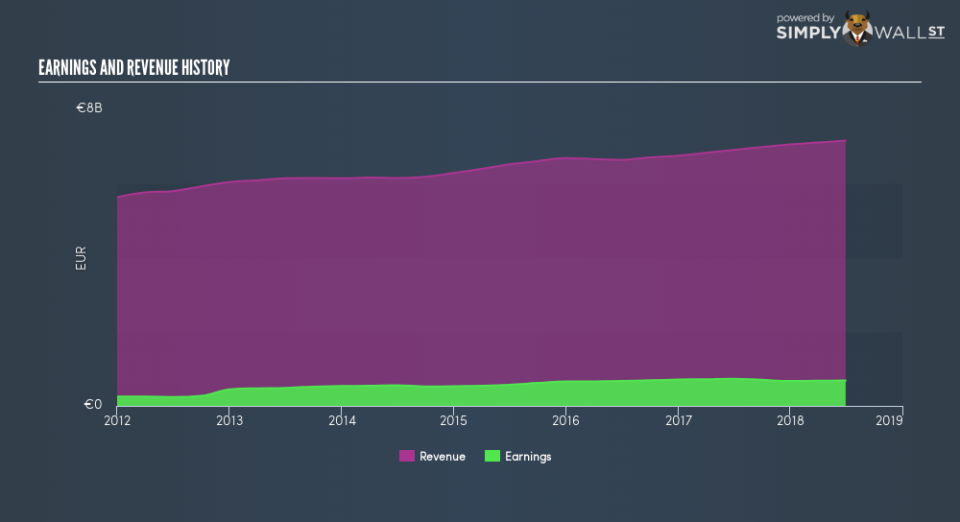Beiersdorf Aktiengesellschaft (ETR:BEI): Should The Recent Earnings Drop Worry You?

For long-term investors, assessing earnings trend over time and against industry benchmarks is more beneficial than examining a single earnings announcement at a point in time. Investors may find my commentary, albeit very high-level and brief, on Beiersdorf Aktiengesellschaft (ETR:BEI) useful as an attempt to give more color around how Beiersdorf is currently performing.
See our latest analysis for Beiersdorf
Despite a decline, did BEI underperform the long-term trend and the industry?
BEI’s trailing twelve-month earnings (from 30 June 2018) of €683m has declined by -6.8% compared to the previous year.
Furthermore, this one-year growth rate has been lower than its average earnings growth rate over the past 5 years of 7.6%, indicating the rate at which BEI is growing has slowed down. Why is this? Let’s examine what’s occurring with margins and whether the entire industry is experiencing the hit as well.
In terms of returns from investment, Beiersdorf has fallen short of achieving a 20% return on equity (ROE), recording 13% instead. However, its return on assets (ROA) of 7.7% exceeds the DE Personal Products industry of 7.6%, indicating Beiersdorf has used its assets more efficiently. Though, its return on capital (ROC), which also accounts for Beiersdorf’s debt level, has declined over the past 3 years from 20% to 18%.
What does this mean?
Beiersdorf’s track record can be a valuable insight into its earnings performance, but it certainly doesn’t tell the whole story. Companies that are profitable, but have volatile earnings, can have many factors affecting its business. I recommend you continue to research Beiersdorf to get a better picture of the stock by looking at:
Future Outlook: What are well-informed industry analysts predicting for BEI’s future growth? Take a look at our free research report of analyst consensus for BEI’s outlook.
Financial Health: Are BEI’s operations financially sustainable? Balance sheets can be hard to analyze, which is why we’ve done it for you. Check out our financial health checks here.
Other High-Performing Stocks: Are there other stocks that provide better prospects with proven track records? Explore our free list of these great stocks here.
NB: Figures in this article are calculated using data from the trailing twelve months from 30 June 2018. This may not be consistent with full year annual report figures.
To help readers see past the short term volatility of the financial market, we aim to bring you a long-term focused research analysis purely driven by fundamental data. Note that our analysis does not factor in the latest price-sensitive company announcements.
The author is an independent contributor and at the time of publication had no position in the stocks mentioned. For errors that warrant correction please contact the editor at editorial-team@simplywallst.com.

 Yahoo Finance
Yahoo Finance 
